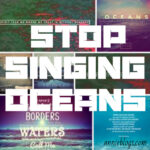As a content creator for payoffsong.com and a dedicated music enthusiast, I’ve recently been tasked with a delightful challenge: exploring the very essence of what constitutes a “song.” This might seem straightforward, but in a world where every piece of music, from instrumental tracks to jingles, is casually labeled a “song,” the true definition risks becoming diluted. This pervasive use of “song” as a blanket term, even among some within the music industry, is a misnomer that obscures the extraordinary nature of an actual song. It blurs the lines between diverse musical forms and diminishes the unique alchemy that makes a genuine song so captivating.
The magic of a song lies in the symbiotic relationship between lyrics and melody. It’s a fusion, a sonic unity where words and music intertwine to create something deeply personal and seemingly timeless. Like water, born from hydrogen and oxygen, a song emerges as an indivisible entity. We don’t dissect the elements when we listen; we experience the unified whole. For songs that resonate with us, the instrumental version instantly evokes the lyrics, and reading the lyrics brings the melody to mind. The power of a song is that sung words carry amplified meaning, and the music is profoundly enriched by the narrative it carries.
Image alt text: Dock Boggs, an early American country musician, playing banjo, highlighting the roots of singer-songwriter tradition.
Just as life without water is unimaginable, a world devoid of songs is equally inconceivable. Songs have been with humanity since the dawn of language and music. Archeologist Steven Mithin, in The Singing Neanderthals, even proposes a prehistoric era where language and music were not separate entities but a proto-song, a primal blend of both. Indeed, the oldest known musical composition, the Hurrian hymn from the 14th century B.C.E., is a song, underscoring the ancient and fundamental role of songs in human expression.
While millennia separate us from such ancient origins, the ingrained presence of word-music units in human consciousness explains the temptation to categorize all music as “song.” However, both words and music have evolved independently into myriad forms – from novels and textbooks to symphonies and ringtones. The fact that they can exist so powerfully alone, yet fuse so seamlessly in a song, makes the continued existence of genuine songs in our modern world even more remarkable.
A defining characteristic of our era is the permanence of recorded songs. Historically, songs survived through oral tradition or written notation, requiring constant re-creation in performance. Performances were ephemeral, fleeting moments in time. But with over a century of recordings, songs and their specific renditions can endure like monuments. We have instant access to songs from across time and continents.
Yet, despite this vast sonic library, many gravitate towards a limited selection of mainstream pop music. This ubiquitous pop music, almost exclusively song-based, reinforces the idea that all music is song. Furthermore, it conditions us to believe that a recorded version is the definitive, and only, realization of a song. We become so accustomed to specific recordings that the abstract composition and its recorded interpretation become indistinguishable, much like the words and music within a song itself. Music libraries are filled with “songs” attributed solely to the performing artist, often neglecting the songwriters and composers behind the work.
Whether authorship is clear or disputed, the deeply personal nature of song fosters immediate identification with the singer. Effective singers, regardless of authorship, make songs their own. The most profoundly moving interpreters are often singer-songwriters themselves, a tradition stretching back to medieval troubadours and ancient oral cultures.
Thus, the first “Sugar Song” I want to spotlight is a performance embodying this unity of music, lyrics, voice, and accompaniment. While not as ancient as the Hurrian Hymn, it predates the modern singer-songwriter era by generations. “Sugar Baby,” recorded in 1927 by Appalachian coal miner Dock Boggs, is an early gem of American country music. Boggs, who faded into obscurity after a brief recording period, was rediscovered decades later thanks to the inclusion of “Sugar Baby” in Harry Smith’s Anthology of American Folk Music in 1952, becoming an icon for the folk revival. Bob Dylan himself has cited “Sugar Baby” as a favorite and recorded his own version in 2001.
Image alt text: Cover of Harry Smith’s Anthology of American Folk Music, a pivotal collection that reintroduced Dock Boggs and “Sugar Baby” to a new audience.
Alexander M. Stern’s blog, Where Dead Voices Gather: Life at 78 RPM, offers an exhaustive analysis of “Sugar Baby” and its recording history. I won’t reiterate those details here. My reason for choosing “Sugar Baby” as an initial “sugar song” is its perfect illustration of word-music unity and composition-performance synergy – qualities that define the expressive power of song. I specifically selected an early recording to highlight the shift in our musical perception brought about by recorded sound. Despite the pre-digital, pre-stereo audio quality, Boggs’ raw, intense voice and stark banjo accompaniment, coupled with lyrics of stark relationship disillusionment (“All I can do— fuss, eat, sleep with you—and I can’t get along this-a way”), resonate with our contemporary feelings of ennui, offering a breakup song more visceral than many modern counterparts.
While starting a celebration of songs with a breakup song might seem ironic, the raw honesty and emotional depth of “Sugar Baby” are precisely what make it a “sugar song”—a song that, despite its bitter theme, possesses an undeniable sweetness in its poignant expression. In the spirit of musical exploration, I’ll conclude with further listening suggestions, a curated list of singer-songwriter creations (broadly defined) spanning the 20th century (and beyond), reflecting the turbulent and joyful spectrum of human experience captured in song:
- Robert Johnson: “Kindhearted Woman Blues” (1936)
- Memphis Minnie: “In My Girlish Days” (1941)
- Hank Williams: “Move It On Over” (1947)
- Buddy Holly: “Every Day” (1958)
- Bob Dylan: “Desolation Row” (1965)
- Joni Mitchell: “Don Juan’s Reckless Daughter” (1977)
- Lydia Lunch (with Teenage Jesus and the Jerks): “Baby Doll” (1979)
- Prince: “Something in the Water (Does Not Compute)” (1982)
- Tori Amos: “Me and a Gun” (1992)


